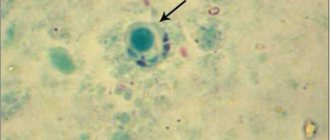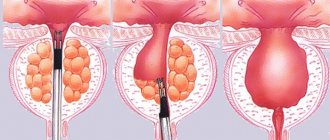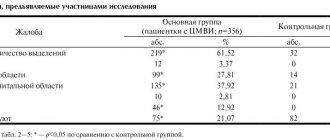STDs are a group of diseases that include:
- “classic” sexually transmitted diseases (syphilis, gonorrhea);
- “new” diseases, the identification of which has become possible recently due to advances in medicine and microbiology (herpes, chlamydia, mycoplasmosis, trichomoniasis, ureaplasmosis, cytomegalovirus, human papillomavirus);
- skin diseases transmitted through sexual contact (pubic lice, scabies, molluscum contagiosum);
- diseases that are sexually transmitted, but primarily affect organs outside the reproductive system (AIDS/HIV, viral hepatitis B and C).
In total, this group includes more than 25 diseases.
Causes
The content of the article
STDs are common among the sexually active population, especially those who practice promiscuity. The development of the disease occurs due to the entry of pathogenic microorganisms into the body:
- bacterial agents;
- yeast-like fungi;
- viruses;
- simplest organisms.
They are transmitted sexually from an infected partner, regardless of what kind of sexual contact is practiced - oral, anal or vaginal. The best way to protect yourself is to use a condom.
Some microorganisms are opportunistic, i.e. live in the human body constantly. They provoke the development of the disease when favorable conditions occur, for example, when immunity decreases.
Sometimes infection occurs through household contact - through personal hygiene items, bed linen, toilet rim, unsterilized instruments, when visiting public places, etc. Infection is also possible vertically (from mother to fetus) and hematogenously (through blood), which is mainly associated with drug addiction.
Risk of contracting STDs
The risk of contracting an STD can be significantly reduced by:
- remain faithful to a permanent partner;
- Get vaccinated against human papillomavirus (HPV) and hepatitis B before sexual activity;
- maintain personal hygiene - do not use someone else’s soap, towel, washcloth, underwear;
- use a condom during sexual intercourse;
- undergo an annual medical examination with your partner.
Syphilis
Syphilis is characterized by a staged course and damage to all body systems. The incubation period is usually a month, but sometimes it is reduced to 9 days or extended to six months.
Primary form (6-8 weeks):
- formation of hard chancre on the skin and mucous membranes: most often in the genital area, less often on the mammary glands, thighs, abdomen, face;
- enlarged lymph nodes in the affected area;
- in women - thick and foul-smelling discharge, itching in the vagina;
- general malaise of the body: elevated temperature, fever, pain in bones and joints.
If left untreated, symptoms may disappear. This does not indicate recovery, but signals the transition of the disease to a new stage.
The secondary form (2-5 years) is characterized by a relapsing course. The main external manifestation is a specific rash on the skin and mucous membranes (bright roseola, papules, plaques, ulcers). Roseola rashes are localized mainly on the neck, forming the so-called “necklace of Venus”.
Syphilitic rash
Other symptoms are also observed:
- hair problems (thinning, split ends, loss);
- weight loss;
- headache;
- poor appetite;
- nausea and vomiting;
- elevated temperature.
In the absence of treatment, the latent period temporarily begins again.
Tertiary form (10-20 years) – internal organs and the central nervous system are irreversibly affected. The main symptom is the formation of specific infiltrative tubercles on the tissues and mucous membranes of internal organs - gumma. They cause degeneration of the affected tissues.
Cognitive impairments similar to complications of dementia occur. First of all, it is dementia and mental disorders. Vision, memory, attention, coordination of movements, speech, and hearing deteriorate. Damage to the vascular and skeletal systems is manifested by syphilitic meningitis, hydrocephalus, and progressive paralysis. Deformation and disruption of the functioning of internal organs occurs: liver, kidneys, lungs, heart.
Gonorrhea
Gonorrhea is characterized by damage to the mucous membranes of the genitourinary tract, sometimes the rectum, oropharynx, and eyes. The incubation period for women is on average up to 10 days, for men – up to 5.
Fresh gonorrhea (up to 2 months from the moment of infection) in women has symptoms:
- vaginal discharge of a purulent or serous-purulent nature;
- itching, hyperemia, swelling of the mucous membranes, formation of ulcers on them;
- frequent urge to go to the toilet, pain and burning when urinating;
- spotting outside of menstruation;
- lower abdominal pain.
Often the clinical picture is mild or completely absent, which is why women consult a doctor untimely. In advanced cases, the inflammatory process can affect the uterus, fallopian tubes, ovaries, and peritoneum. Possible general intoxication of the body, fever, disrupted menstrual cycle, diarrhea, nausea, vomiting.
Clinical symptoms in men are similar to women. In the later stages of the disease, the prostate, seminal vesicles, etc. are affected. There may be complaints of fever, chills, and painful bowel movements.
With chronic gonorrhea (more than 2 months from the moment of infection), adhesions develop in the pelvis, libido decreases in men, and the menstrual cycle and reproductive function are disrupted in women.
Treatment methods for STDs
STDs are treated by gynecologists (for women), andrologists (for men), and urologists.
When visiting a doctor, you should not be afraid that your intimate problems will become public - STD treatment is carried out anonymously. A doctor is required by law to maintain medical confidentiality while respecting the rights of his patient.
Drug treatment
In the case of STDs, etiotropic treatment is carried out, aimed at eliminating the cause of the disease (infectious agents). If the causative agent is a bacterium, antibiotics are used; if the disease is viral, antiviral drugs are used. As a rule, local treatment is combined with general treatment.
You should not self-medicate. Treatment must be carried out by a doctor. The disappearance of symptoms does not necessarily mean that the disease has been cured. To monitor the effectiveness of treatment, laboratory diagnostics (tests) should be used.
Make an appointment Do not self-medicate. Contact our specialists who will correctly diagnose and prescribe treatment.
Rate how useful the material was
thank you for rating
Trichomoniasis
Trichomoniasis is characterized by damage to the urogenital tract, and less commonly to the prostate gland in men. The incubation period averages from 3 to 30 days.
Trichomonas
Fresh trichomoniasis in women has the following symptoms:
- copious foamy and foul-smelling discharge that is yellow, green or gray in color;
- hyperemia, swelling, itching, burning of the vaginal mucosa and around the labia;
- nagging pain in the lower abdomen;
- pain and discomfort during intimacy;
- urination disorder (frequent, painful, incontinence, etc.).
In men, trichomoniasis often occurs in a latent form. During exacerbation, the clinical picture is similar to that of women.
The intensity of manifestations is significantly influenced by smoking, drinking alcohol, poor diet, taking antibiotics, and exacerbation of other chronic diseases. In women, symptoms worsen before menstruation.
If left untreated, the disease becomes chronic or Trichomonas carriage. Chronic trichomoniasis occurs over a long period of time with mild symptoms. In the case of Trichomonas carriage, no external signs are observed; the pathogen is detected in the laboratory. This is a conditional division, since trichomoniasis can change from one form to another.
Prevention
Planned prevention of sexually transmitted infections is aimed at preventing the pathogen from entering the structures of the urogenital tract. To do this, it is recommended to have sex with one sexual partner and use condoms.
Prevention of STDs after casual sex for men includes the use of antiseptics in the form of a solution, cream or ointment that is used to treat the external genitalia.
If certain infections are suspected, your doctor may prescribe a prophylactic course of antibiotics.
For any STDs in men, contact an experienced venereologist at our clinic - Albina Ildarovna Mukminova
Chlamydia
Chlamydia is characterized by damage to the genitourinary, respiratory, cardiovascular, musculoskeletal systems, and organs of vision. The incubation period is 2-30 days.
The first signs of the disease in women:
- mucous or purulent-mucous vaginal discharge that has a yellow color and a foul odor;
- itching and burning;
- lower abdominal pain;
- intoxication of the body.
In men, chlamydia manifests itself:
- mucopurulent or watery discharge from the urethra;
- itching and burning when emptying the bladder;
- swelling and redness of the external opening of the urethra;
- pain in the lower back and groin;
- deterioration of general condition.
In children, the inflammatory process usually affects the eyes, ears, and respiratory system. Chlamydia in newborns is extremely dangerous.
Learn more about types of infections
Among doctors, it is customary to divide infections according to the pathogen that provoked a particular pathology. The list of STIs in men is as follows:
- bacterial (syphilis, gonorrhea, chlamydia, etc.);
- viral (human papillomavirus, herpes, HIV, genital warts);
- fungal (thrush of the urethral mucosa);
- parasitic (pediculosis, scabies);
- protozoans (trichomoniasis).
All of the above infections destroy not only the patient’s reproductive tract, but also the patient’s genitourinary and reproductive systems.
Mycoplasmosis
Mycoplasmosis is characterized by great polymorphism and has varied localization. The incubation period ranges from 2 weeks to several months.
The clinical picture is similar in both sexes:
- pain, cutting, burning when urinating;
- hyperemia and swelling of the external urethral opening;
- frequent urination;
- irritation and redness of the vaginal mucosa in women;
- glassy or whitish discharge with a musty odor;
- pain during intercourse (in men it increases with ejaculation)
- general intoxication of the body;
- pain in the lower abdomen, in the lower back.
The list of symptoms may be shortened or supplemented depending on the location of the pathogen. As the infection progresses, other internal organs are affected.
The most common STDs in men
All sexually transmitted diseases can be divided into five groups:
- Viral infections. This group of STDs includes hepatitis B, human papillomavirus, HIV, and genital herpes. It seems that HPV (human papillomavirus) is the most harmless on this list. But that's not true. There are many varieties of this virus. Some of them can cause cancer in both men and women.
- Bacterial infections. These include syphilis, mycoplasmosis, chlamydia, ureaplasmosis, gonorrhea and some other diseases. Today, many of them are successfully treated with medications. But if the therapy was not chosen correctly or the disease turned out to be advanced, the person will have to face serious problems.
- Fungal infections. One of the most common diseases belonging to this group is candidiasis or thrush. The fungus manifests itself with decreased immunity, hormonal imbalances, high sugar consumption, poor hygiene, and after taking certain medications. If symptoms of a fungal infection appear, immediate action must be taken. Otherwise, you will infect your partner, and the disease will progress and lead to the development of complications.
- Protozoal infections. A striking example is trichomoniasis.
- Parasitic diseases (scabies, lice pubis).
Almost everyone is at risk of contracting an STD by not using a condom during sexual intercourse. Moreover, you can become infected in marriage, even when both partners are faithful to each other. The main risk group for contracting sexually transmitted diseases are teenagers and young adults. The second risk group is men from 40 to 50 years old, when the second wave of sexual activity is observed.
Ureaplasmosis
Ureaplasmosis is more often diagnosed in women, since acute symptoms are not typical for men. The incubation period ranges from 7 to 20 days.
Symptoms of the disease in women:
- vaginal discharge atypical in quantity, consistency, color and smell;
- burning and pain when emptying the bladder, increased urge;
- lower abdominal pain;
- disrupted menstrual cycle.
In men, ureaplasmosis manifests itself:
- cloudy or mucous discharge from the urethra;
- pain and burning when urinating;
- itching along the urethra;
- erectile dysfunction.
Often the clinical picture is blurred, especially at the initial stage of development of ureaplasmosis. If left untreated, the inflammatory process affects the bladder, prostate, kidneys, seminal vesicles, etc.
Gardnerellosis
Gardnerellosis is a disorder of the vaginal microflora. In men it develops very rarely: the presence of the pathogen in the body usually does not manifest itself in any way, only sometimes causing a sluggish inflammatory process with erased symptoms. The incubation period is 7-20 days.
Characteristic signs of gardnerellosis:
- vaginal discharge with a fishy odor, yellow, grayish-white or green;
- burning, itching and discomfort in the vagina and urethra, increasing during urination and sexual intercourse.
Other symptoms may be due to the development of complications of gardnerellosis.
Basic measures to prevent STDs
Treating STDs is much more difficult than preventing them from occurring. A condom will not completely protect you from infection. But it significantly reduces the risk of infection. Therefore, use a condom every time you have sexual intercourse with a regular or new partner. Also, as a preventive measure for STDs, doctors recommend adhering to the following rules:
- Practice good hygiene regularly. Each person should have their own towel and underwear.
- Do not skip preventive examinations from specialists. A man should make an appointment with a urologist at least once a year.
- It is advisable not to change partners frequently, to be faithful to your spouse, and to avoid casual sexual contact.
- Boost your immunity in accessible ways. Even if the virus is in the blood, good immunity will prevent it from actively manifesting itself.
As you can see, most sexually transmitted diseases are dangerous for both men and women. Some of them manifest themselves asymptomatically, which is the most dangerous thing, while others are accompanied by characteristic symptoms. The incubation period for STIs varies among men; for some infections it can reach a year. Therefore, it is recommended at any age to follow the rules for preventing STDs and not to miss preventive examinations with doctors. If you do develop an infection, do not hesitate to begin treatment as soon as possible.
If you don’t know where to go with a problem, call our clinic by phone. Specialists from the First Clinic of Orekhovo will help solve your health problems and answer any questions you may have. We can provide you with the necessary tests, tests, and hardware scans. There is no need to go anywhere or wait for a long time. To make an appointment, use the special form on the clinic’s website or call one of the contact numbers.
Candidiasis
Candidiasis (thrush) is characterized by damage to the skin and mucous membranes, less often internal organs. The incubation period is 1-8 days.
Candidiasis
The clinical picture depends on the localization of the pathological process. This may be the skin and its appendages, the oral cavity, the genitourinary system, and internal organs. The main symptom is a white coating on the affected area.
Urogenital candidiasis in women manifests itself:
- itching and burning of the external genitalia;
- white cheesy vaginal discharge;
- pain during intercourse.
Signs of the disease in men:
- itching, soreness, swelling and redness in the area of the glans penis;
- pain during sex and urination;
- white-grayish coating on the penis.
After 2 months from the moment of infection, candidiasis becomes chronic. On the mucous membranes, the development of foci of dryness, hyperpigmentation, infiltration, and tissue atrophy is observed.
Complications and consequences
Any signs of sexually transmitted infections in men should be a reason to consult a doctor. Only a doctor can see a clear clinical picture, diagnose and prescribe treatment for STIs. It is dangerous not to be treated or seek medical help for STDs, as they can lead to serious complications:
- infertility and impotence;
- prostatitis, cystitis, urethritis and other diseases of the genitourinary system; the occurrence of adhesions and other pathological changes in tissues;
- development of malignant neoplasms;
- the disease can become chronic.
Genital herpes
Genital herpes ranks second in frequency among STDs. The incubation period is from 2 to 26 days.
The main symptom of the disease is a rash in the genital area.
Their localization:
- in men - the foreskin and glans penis, urethral mucosa, coronary groove, area around the anus, upper part of the inner thighs, scrotum;
- in women - the perineum, labia, inner thighs, vagina, uterus, urethral and cervical mucosa, area around the anus.
The bubbles are small, grouped and tend to coalesce. After 2-4 days, the liquid in them becomes cloudy, the cavity ruptures, and painful erosive-ulcerative elements form. Over time, they dry out and become crusty. Healing occurs within two weeks.
Symptoms of herpes often include fever, weakness, malaise, headache and muscle pain, frequent and painful urination, and enlarged inguinal lymph nodes.
Methods for diagnosing and treating STIs in men
Diagnosis of sexually transmitted diseases includes a number of medical measures:
- blood test;
- smear for STDs - taken from the urethra, semen;
- PCR (polymerase chain reaction) - allows you to detect DNA fragments in smears and identify the disease;
- culture, which allows identification of the pathogen;
- serological diagnostic methods, which include tests for PIF and ELISA, which make it possible to detect antibodies to various pathogens and understand what a person is sick with.
The material for laboratory research in our clinic can be blood, saliva, semen, urine, scrapings from mucous membranes. We prepare the patient in advance to collect materials for testing. Sometimes this means avoiding sexual activity for 48 hours and not urinating for a while. In other cases, no preparation is required other than maintaining good personal hygiene.
Treatment of sexually transmitted infections is always individualized. Our specialists take into account the characteristics of the patient’s body, the severity of the disease, the presence or absence of complications. Typically, therapy includes increasing immunity with the help of immunostimulants, vitamins, minerals, and physical therapy. Medicines are also used, including antibiotics and antivirals.
If one of the partners has a sexually transmitted disease, the other partner must also pass all the necessary tests. This needs to be done even if he has no worrying symptoms.
Human papillomavirus (HPV)
The virus, having entered the human body, can wait for favorable conditions for a long time. When activated, it provokes the development of benign formations - warts, papillomas and condylomas. They can appear on any part of the body and have different shapes, colors and sizes.
Signs of pathology:
- growths on the skin and mucous membranes (often in the genital area);
- redness and itching of the affected area;
- pain and discomfort during intimacy.
The virus has more than 100 strains. Some of them are oncogenic. Thus, HPV sometimes provokes the development of cancer of the vagina and vulva, and in men – cancer of the penis.
Tests for sexually transmitted infections
To find out whether a person is infected or not, there is a certain list of tests. As a rule, for more effective diagnosis, a combination of several types of tests is used:
— A smear on the flora. It is taken from the mucous membranes of the genital organs, less often from the mouth or anus. When the smear dries, the doctor examines it under a microscope.
— Bacterial culture. It requires a saliva/blood/urine/stool sample. The sample is placed in a substrate nutritious for bacterial growth. After 7-8 days, the causative agent of the disease can be determined, and their sensitivity to certain antibiotics can be analyzed.
— PCR diagnostics. This is a molecular genetic study, the accuracy of which is 95% and allows you to detect even hidden infections. Based on the method of repeated copying of DNA fragments.
— General and biochemical blood test. It allows you to identify inflammation and evaluate changes in organ function.
— Enzyme-linked immunosorbent assay (ELISA). It detects antibodies to STD pathogens. This allows us to identify both the current disease and past infections.
Cytomegalovirus (CMV)
CMV is part of the herpesvirus family. It differs from its counterparts in that it spreads throughout the body and affects internal organs - kidneys, heart, liver.
The disease manifests itself as a persistent cold, namely:
- weakness;
- chills;
- malaise;
- headaches and joint pains;
- runny nose;
- enlargement and inflammation of the salivary glands;
- excessive salivation;
- the appearance of a skin rash.
CMV is often asymptomatic or oligosymptomatic. The pathology poses a particular danger during pregnancy. It can cause miscarriage, stillbirth, or cause severe congenital deformities in the baby.
Antibiotics for STDs
Antibacterial therapy is the basis of treatment for most STDs.
Tablets for genital pathologies and other antibacterial medications are prescribed to almost every patient.
In most cases, broad-spectrum antibiotics are used.
For the most effective therapy, it is important to wait for the results of microflora culture analysis.
One of the most common groups of antibacterial agents with a wide spectrum of action are macrolides (azalides).
Of these, patients with STDs are prescribed Azithromycin or Sumamed (azithromycin derivative) and Macropen.
Both drugs have a similar principle of action, have a bacteriostatic effect, and disrupt the protein synthesis of pathogenic microorganism cells.
There are products that have an antiseptic effect.
A striking example would be Miramistin and Chlorhexidine.
The first is in the form of a solution for topical use, the second is a suppository for vaginal administration.
If the infectious agent is resistant to antibacterial agents of the macrolide group, penicillin antibiotics - Amoxicillin or Amoxiclav - are used.
Both have an inhibitory effect on a wide range of pathogenic and opportunistic bacteria.
Depending on the nature of the disease and the resistance of the pathogen, the doctor may prescribe other drugs.
An alternative is the antiprotozoal agent with an antibacterial effect “Metronidazole”, the cephalosporin antibiotic “Ceftriaxone” and others.
Only a doctor can prescribe such drugs and determine the dosage and duration of use.
HIV
HIV is characterized by disruption of the immune system. Due to the suppression of the body's protective properties, secondary infections and malignant formations develop. The disease occurs in 5 stages, the last of which is AIDS.
Structure of the HIV virus
The first signs of HIV:
- causeless weight loss;
- frequent colds;
- chronic diarrhea;
- difficulty breathing, shortness of breath, persistent cough;
- chest pain;
- private headaches;
- cognitive disorders;
- depressive states;
- inflammation of the lymph nodes;
- increased sweating and feeling hot;
- blurred vision;
- skin rash, fungal infection that cannot be treated, etc.
The course of the disease is varied. It can last several months or stretch up to 20 years.
Ways of transmission of STDs
The main route of transmission of any sexually transmitted disease is sexual contact in which contraceptives in the form of condoms were not used.
Other types of sex - oral, anal, also lead to infection.
In addition, sharing toys of a sexual nature, such as vibrators, significantly increases the risk of infection.
Almost all types of diseases described earlier have a parenteral (injection) route of infection and intrauterine.
Hepatitis
Hepatitis is an inflammation of the liver, accompanied by damage to its tissue. The latent course of the disease or lack of treatment ends in the transition to a chronic form. The outcome in this case is unfavorable - cirrhosis and liver cancer.
The most typical symptoms of hepatitis:
- lethargy, weakness and deterioration of general condition;
- jaundice;
- causeless weight loss;
- lack of appetite;
- elevated temperature;
- rash and itching;
- heaviness and pain in the right hypochondrium, extending under the right shoulder blade;
- dryness and bitterness in the mouth;
- belching;
- nausea and vomiting;
- joint pain;
- dark urine and discolored stool.
The clinical picture may vary depending on the type of disease.
STDs (STIs, urogenital infections)
Sexually transmitted infections (diseases) (STIs, STDs) are a group of genitourinary infections. The incidence of STIs is a social problem, since urogenital infections can lead to infertility or congenital diseases during intrauterine transmission from mother to fetus. According to WHO, more than 1 million people become infected with STIs every day.
There are more than 30 different microorganisms (bacteria and viruses) that cause urogenital infections and sexually transmitted infections. The main most common STIs:
- Gonorrhea (gonorrhea, caused by Neisseria gonorrhoeae);
- Chlamydia (pathogen: Chlamydia trachomatis;
- Trichomoniasis (trichomoniasis), causative agent – Trichomonas vaginalis;
- Mycoplasma genitalium infection;
- Syphilis;
- HIV infection;
- Infections caused by human papillomaviruses (HPV);
- Herpes viral infections (HSV types 1 and 2).
The term “sexually transmitted diseases” is also common, since transmission of infections occurs mainly through unprotected sexual intercourse, including vaginal, anal and oral. Some infections, such as HIV and syphilis, can be transmitted to a fetus during pregnancy or childbirth from an infected mother. Infection through blood and blood products (HIV, viral hepatitis) is also possible. Young children can get the infection from sick parents if hygiene and care are not maintained.
The main problem of STIs is that most cases are asymptomatic or have mild clinical manifestations. But even with this course, the risk of complications is high.
Four STIs—gonorrhea, chlamydia, trichomoniasis, and mycoplasma infection (caused by mycoplasma genitalia)—have similar presentations. Similar diagnostic approaches are used to diagnose them.
The main complaints for the above STIs:
- Discharge from the genital tract. With gonococcal infection, purulent discharge from the genital tract appears. They are especially pronounced in men, while in women more than half of the cases occur without clinical manifestations. Trichomoniasis is characterized by gray-yellow discharge. Women often have foamy discharge with an unpleasant odor. With chlamydia and infection caused by mycoplasma, the genitalium is mainly bothered by mucopurulent discharge.
- Itching, burning, discomfort in the external genital area
- Pain during sexual intercourse (dyspareunia)
- Lower abdominal pain
- Erosions or ulcers in the external genital area
- Discomfort in the upper respiratory tract with the development of gonococcal pharyngitis
- Discomfort, redness of the eyes, purulent or mucopurulent discharge from the eyes with the development of gonococcal or chlamydial conjunctivitis
- General intoxication syndrome (fatigue, fever) with the development of complications
- Joint pain during the development of reactive arthritis due to chlamydia
Main complications of STIs.
- Pelvic inflammatory disease (PID)
- Orchitis (inflammation of the testicles) and epididymitis (inflammation of the epididymis)
- Prostatitis
- Infertility
- Reactive arthritis due to chlamydia
It must be remembered that more than half of STI cases occur without clinical manifestations! But despite the absence of complaints, there remains a high probability of developing complications! Therefore, even an asymptomatic course with laboratory confirmation of the diagnosis requires mandatory treatment! Sexual partners of persons with known STIs should be examined!
Who needs to get tested for STIs?
- Patients with complaints of discharge from the genital tract, itching, burning in the external genital area;
- Persons with pain in the lower abdomen (pelvic area);
- In preparation for pregnancy (examination of both partners)
- Pregnant
- When planning gynecological operations
- Persons with a burdened obstetric and gynecological history (miscarriage, infertility, birth of low birth weight children)
- If your sexual partner is diagnosed with an STI
- Having unprotected sexual contact with an unknown partner
Diagnostics
A feature of STIs is the absence of any characteristic clinical picture of the disease. Moreover, each pathogen has individual sensitivity to antibacterial drugs, i.e. Treatment for each of the four STIs (gonorrhea, trichomoniasis, chlamydia, and mycoplasma genitalium infection) will be different. Mixed infections are common. This means that you can become infected with several pathogens at the same time, and treatment should be adjusted depending on the identified STI pathogen. Therefore, to diagnose STDs, you need highly accurate and quick tests!
Among the tests for STIs, molecular biological tests with the determination of DNA or RNA of microorganisms - the PCR or NASBA method - are primarily recommended. PCR and NASBA analyzes are the most accurate diagnostic tests: they have a high sensitivity of 98-100%, specificity - 100%. Microscopic examination of smears of discharge from the genital tract, smears from the rectum, has low information content for identifying infections, especially in asymptomatic cases. But smear microscopy can reveal inflammation in the genitourinary tract and help in differential diagnosis with other diseases.
The CMD laboratory offers the following tests for STIs:
- Comprehensive study of STIs (Chlamydiatrachomatis, Mycoplasmagenitalium, Neisseriagonorrhoeae, Trichomonas vaginalis), DNA quantification
- Comprehensive study of STIs (Chlamydiatrachomatis, Mycoplasmagenitalium, Neisseriagonorrhoeae, Trichomonas vaginalis), qualitative determination of ribosomal RNA using the NASBA method
Since disorders of the vaginal microbiocenosis and candidiasis can often occur simultaneously with STIs, it is recommended to take a comprehensive test for STIs and identify dysbiosis:
- Florocenosis and NCMT and Microscopy
When using PCR and NASBA tests, the following recommendations should be followed:
When using the NASBA method to determine the RNA of a microorganism, it is recommended to take smears no earlier than 14 days after finishing taking antibacterial drugs; when using PCR, no earlier than a month later. Smears from the urethra should be taken no earlier than 3 hours after the last urination; smears from the cervical canal from the vagina should be taken outside of menstruation.
Sources
- Clinical guidelines for gonococcal infection of the Russian Society of Dermatovenerologists and Cosmetologists, 2016
- Clinical guidelines for chlamydial infection of the Russian Society of Dermatovenerologists and Cosmetologists, 2016
- Clinical guidelines for urogenital trichomoniasis of the Russian Society of Dermatovenerologists and Cosmetologists, 2016
- Clinical guidelines for urogenital mycoplasma infection of the Russian Society of Dermatovenerologists and Cosmetologists, 2016
Lymphogranuloma venereum
This disease is characterized by purulent-inflammatory lesions of the lymph nodes and soft tissues of the urogenital area. The incubation period is from 2 days to 2 months. The disease develops in stages.
First phase (2-3 weeks):
- the appearance of erosive and ulcerative elements. Localization in men - glans penis, groin, urethra;
- in women - vulva, vagina, cervix. After oral or anal sex, lesions usually spread to the lips, tongue, rectum, fingers;
- partial enlargement of lymph nodes.
Second phase (1-2 years):
- compaction and fusion of regional lymph nodes, their pain;
- formation of a dense lumpy conglomerate up to 6-8 cm in diameter;
- opening of suppurations.
The third phase is characterized by severe destructive disorders of the regional lymph nodes, liver and spleen. Fistulas may occur in the pelvic area.
Lymphogranuloma venereum is not considered a common disease. Usually occurs in people 20-30 years old.
How can you get an STD?
The statement that sexually transmitted diseases are transmitted only through unprotected sexual intercourse is not entirely true.
Of course, the chance of infection in the absence of contraceptives during sex reaches 100%.
But there are other types of diseases whose transmission does not require such close contact.
How else are sexual diseases transmitted?
Thus, herpes infection is successfully transmitted through a kiss, saliva (if we are talking about herpes on the lips (herpes labialis)).
Gonorrhea can be transmitted through oral and anal sex.
If a patient has tonsillitis caused by Neisseria gonorrhoeae, transmission is also possible through a kiss.
Syphilis can be transmitted through household contact with prolonged contact with a sick person.
If a pregnant woman has Treponema pallidum, the child is also infected.
It is almost impossible to contract any form of STI in a public toilet.
All pathological agents are not resistant to environmental factors.
However, you must wash your hands thoroughly when leaving this room.
It is advisable to always have hand sanitizer with you, like Batsilol.
Diagnostics
Most STDs have a fairly similar clinical picture, so diagnosis based only on history and external manifestations is impossible.
The diagnosis is made based on the results of a number of tests:
- blood test for microflora;
- bacteriological culture;
- immunological blood test;
- Mutual investment fund method;
- PCR study.
The diagnostic plan is drawn up depending on the symptoms.
Depending on the suspected disease, different diagnostic materials are required for testing:
- genital smear;
- scraping or smear from the urethra;
- sperm, prostate juice;
- blood (usually from a vein);
- urine.
Diagnosis of STDs
The probability of a combination of several STDs at once is quite high, so one patient may be prescribed a full list of tests.
Methods for diagnosing STDs
If you suspect an STD, you should not put off visiting a doctor! If left to chance, an STD usually takes on a latent form, which is mistakenly taken for a cure. In this case, the patient remains a carrier of the infection. Various complications are possible. For a woman, one of the most terrible consequences of a long-term course of a sexually transmitted disease is infertility. It is also worth remembering that without medical care, diseases such as HIV, hepatitis B and syphilis lead to death.
Diagnosis of STDs is carried out using laboratory research methods.
Tests for STDs (STIs)
To identify the causative agent of STDs, various laboratory diagnostic methods can be used - microscopic examination, cultural examination, PCR diagnostics, serological blood test. The necessary tests are often combined into specialized profiles.
More information about the diagnostic method
Preventive examination
Sometimes it is worth visiting a doctor to make sure that there are no STD pathogens in the body (for this, tests for STDs are also taken). This is done, for example, before marriage. Gynecologists also recommend that a woman planning a pregnancy undergo an examination and, if necessary, a course of treatment for STDs in order to reduce the risk of miscarriage and ensure the health of the unborn child.
Sign up for diagnostics To accurately diagnose the disease, make an appointment with specialists from the Family Doctor network.











